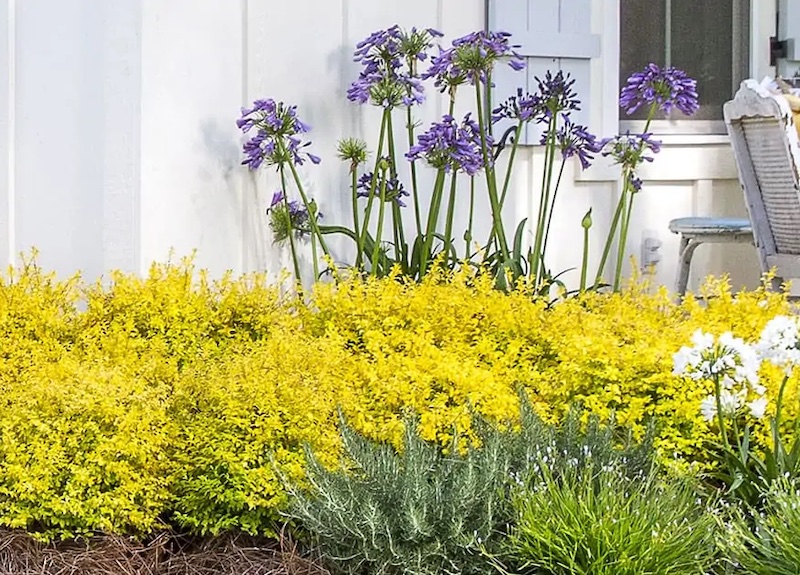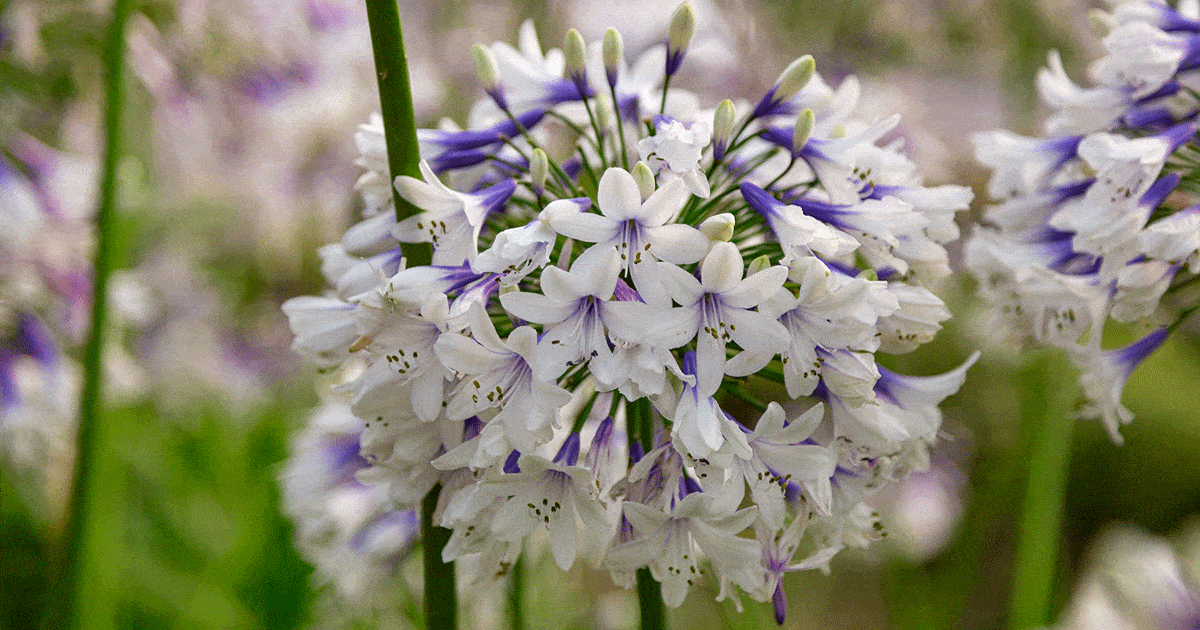Growing Agapanthus: A Full Guide to Beautiful Blooms
Growing Agapanthus: A Full Guide to Beautiful Blooms
Blog Article
Grasping the Art of Agapanthus Treatment: Necessary Actions for Healthy Growth and Vivid Blossoms
In the realm of horticulture, the cultivation of agapanthus stands as a fulfilling undertaking for those who look for to support these stylish flowering plants. With their striking blooms and stylish foliage, agapanthus has actually caught the attention of garden enthusiasts worldwide. However, attaining ideal growth and vivid blossoms requires a nuanced method that includes various necessary steps. From picking the appropriate selection to understanding trimming techniques, the journey in the direction of cultivating flourishing agapanthus plants is complex and holds the essential to opening the complete potential of these organic gems.

Picking the Right Agapanthus Variety

When selecting the appropriate Agapanthus range for your garden, take into consideration elements such as climate viability, bloom shade, and growth behavior. Furthermore, consider the environment in your region to make certain the Agapanthus range you pick can flourish in your specific conditions. Understanding the growth habit of different Agapanthus selections is vital for proper positioning within your garden.
Suitable Growing Conditions
Thinking about the ideal ecological demands is crucial for successful Agapanthus growing. Agapanthus plants are delicate to cool temperatures and ought to be secured from frost throughout winter months.
To make sure healthy and balanced development and vibrant blossoms, plant Agapanthus bulbs at a depth of about 2-4 inches and area them 8-12 inches apart. Including raw material, such as garden compost, to the dirt can improve drainage and fertility, promoting durable root development. Mulching around the base of the plants helps keep wetness and reduces weed development. Routine watering is critical, specifically throughout the expanding period, to maintain the dirt continually wet yet not saturated.
Watering and Fertilizing Tips
Preserving proper dampness levels and providing important nutrients are crucial components in the treatment regimen for Agapanthus plants. When it comes to sprinkling Agapanthus, it is important to strike an equilibrium. These plants like regularly wet soil yet are vulnerable to root rot if overwatered.
Feeding Agapanthus is crucial for promoting healthy and balanced development and respected flowers. Apply a balanced plant food, such as a 10-10-10 formula, in the early springtime as new development emerges. Repeat this application every 6-8 weeks throughout the expanding season. Stay clear of excessive fertilizing, as it can lead to lavish foliage at the cost of blooms. Always adhere to the producer's guidelines for proper dilution and application approaches. By following these watering and feeding ideas, you can ensure your Agapanthus plants grow and create dynamic, durable flowers.
Pruning Methods for Agapanthus
Trimming Agapanthus plants at the ideal times and with proper methods is critical for maintaining their health and promoting ideal development and blooming. The excellent time to prune Agapanthus is in late winter season or very early spring prior to new growth emerges. Start by eliminating any type of yellowing or dead fallen leaves near the base of the plant. Cut them as short as feasible without harming the arising shoots.
Deadheading invested flowers can also reroute the plant's power right into generating more flowers rather than establishing seeds. If you want More Help to collect seeds for breeding, leave some blossoms to fully grown and dry on the plant.
Bear in mind to make use of tidy, sharp devices to make exact cuts and decrease the threat of presenting diseases. Agapanthus. Regular trimming will help maintain your Agapanthus looking healthy and balanced and neat while making certain an abundant display visit our website of gorgeous flowers
Handling Common Bugs and Diseases
After ensuring correct pruning methods for Agapanthus, it is vital to attend to common bugs and diseases that can impact the wellness and vitality of these plants. One typical pest that impacts Agapanthus is the Agapanthus gall midget.
Furthermore, Agapanthus plants can endure from origin learn this here now rot if they are grown in inadequately draining pipes soil. By being alert and taking timely activity against bugs and illness, you can aid your Agapanthus plants grow and generate dynamic flowers. Agapanthus.

Conclusion
Finally, understanding the art of agapanthus treatment includes choosing the best variety, providing ideal growing problems, proper watering and fertilizing, suitable pruning strategies, and dealing with common parasites and illness. By complying with these important actions, you can make sure healthy growth and vivid flowers for your agapanthus plants. Remember to regularly check and preserve your plants to promote their total wellness and longevity.
To make certain healthy development and lively blooms, plant Agapanthus light bulbs at a depth of regarding 2-4 inches and space them 8-12 inches apart. By adhering to these watering and fertilizing suggestions, you can ensure your Agapanthus plants flourish and generate dynamic, long-lasting flowers.
One common parasite that impacts Agapanthus is the Agapanthus gall midget. Furthermore, Agapanthus plants can endure from root rot if they are grown in badly draining pipes soil. By adhering to these vital actions, you can guarantee healthy and balanced growth and vivid blooms for your agapanthus plants.
Report this page